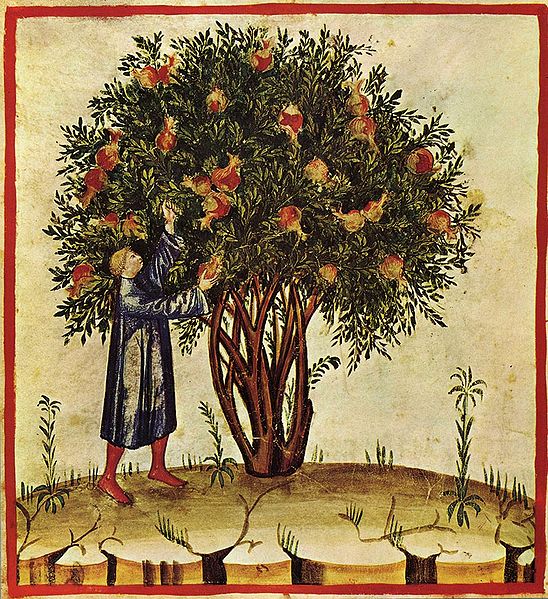Taqwīm aṣ‑Ṣiḥḥa is originally an 11th-century Arab medical treatise by ibn Butlan of Baghdad. In the West, the work is known by the Latinized name taken by its translations: Tacuinum Sanitatis.
Ibn Butlan's Tacuinum sanitatis, Rhineland, 2nd half of 15th c.
Tacuinum Sanitatis, Lombardy, late 14th century (Biblioteca Casanatense, Rome).
Harvesting garlic, from Tacuinum Sanitatis, c. 1400 (Bibliothèque nationale, Paris)
Abū 'l-Ḥasan al-Muḫtār Yuwānnīs ibn al-Ḥasan ibn ʿAbdūn ibn Saʿdūn ibn Buṭlān known as Ibn Buṭlān was a physician and Arab Christian theologian from Baghdad during the Abbasid era. He left his hometown for travels throughout the Iraq, Syria, Egypt, and Asia Minor during which he practiced medicine, studied, wrote, and engaged in intellectual debates most famously the Battle of the Physicians with Ibn Riḍwān. He was a first-hand witness of the Schism of 1054 in Constantinople, contributing a work to the discussions surrounding it for Patriarch Michael I Cerularius. After his time in Constantinople he remained in the Byzantine Empire, becoming a monk in Antioch during the end of the Macedonian Renaissance.
Ibn Buṭlān (left) and two of his students depicted in the Cod. Vindob. S. N. 2644 edition of the Tacuinum sanitatis
Mustansiriya Madrasah, an example of Abbasid architecture, gives a visual impression of what Ibn Buṭlān's place of learning might have looked like.
Basilica of ar-Reṣafa, now in ruins, which Ibn Buṭlān described in detail in his missives to Hilāl aṣ-Ṣabi
Aleppo Citadel, where the Emir Muʿizz ad-Daula Ṯimāl ibn Ṣāliḥ, who received Ibn Buṭlān kindly and honoured him, had his court







